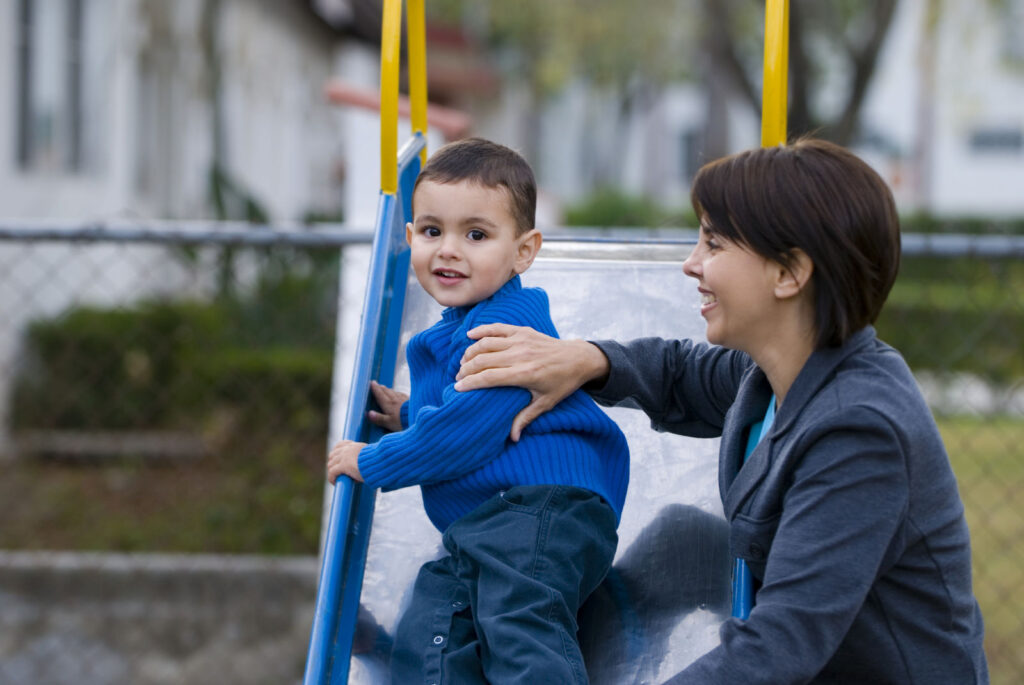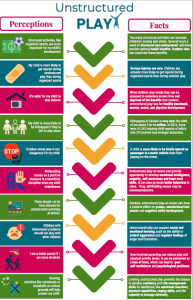It may be tempting to “bubblewrap” your child to keep them safe from the potential of injury but it’s crucial for your child’s healthy development and wellbeing to get outside and explore. Studies have shown that outdoor play affords many benefits to children, including better physical health, as well as mental health and psychosocial benefits.
Through play, children learn:
- Societal roles, norms and values.
- How to make decisions and problem solve.
- How to exert self-control, follow rules and regulate emotions.
Play helps children develop:
- Physical and cognitive competencies.
- Creativity.
- Peer relationships.
- Self-worth and efficacy.
- Intrinsic interests.
Risk-taking in play helps children to:
- Test their physical limits.
- Develop their perceptual-motor capacity.
- Learn to avoid and adjust to dangerous environments and activities.
Active supervision, while still giving your child the chance to explore and develop, is key.
Child safety experts recommend matching your level of supervision with the potential risk your child is facing, something they call “stages of vigilant care.”

- Open observation: the “starting stage”: you play alongside and are non-intrusive in your child’s activities.
- Focused attention: you spot warning signs and risk escalates. At this point, you check in with your child, talk, and reflect on how to manage the risk. Once that happens, you can return to the “open observation” approach.
- Active intervention: there’s an immediate change needed to reduce risk. You intervene using language to empower and prompt your child to return to safety.
You should spend most of your time in open observation, very little in focused attention and hardly any time in active intervention.
